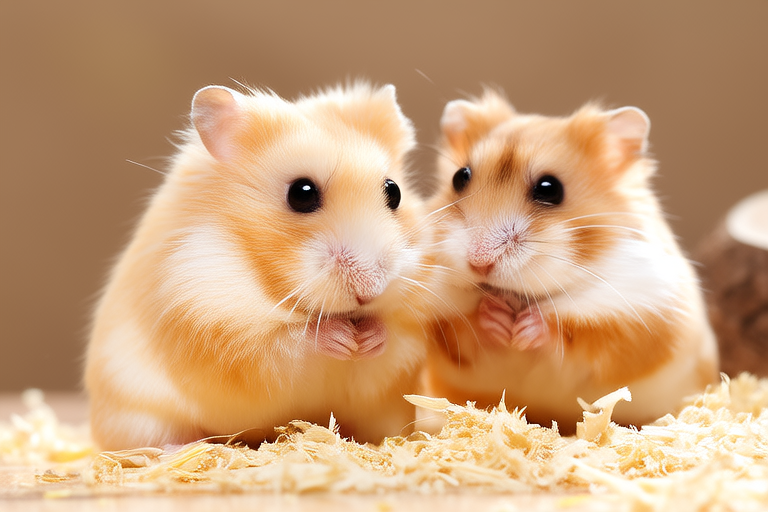Meet the Tiniest: A Guide to Roborovski Hamsters
Welcome to the fascinating world of Roborovski hamsters! These tiny creatures are not only adorable but also full of charm and personality. Known for being the smallest domesticated hamster species, Roborovskis offer an intriguing pet experience that is both delightful and rewarding. This guide will walk you through everything you need to know about these charming little animals, from their origins to their unique behaviors and care requirements.
Origins and History
The Roborovski hamster (Cricetulus roborovskii) hails from the deserts of Central Asia, specifically Kazakhstan, Mongolia, and China. They were first discovered by Lt. Vsevolod Roborovski, a Russian explorer, during an expedition in 1894. However, it wasn’t until the late 20th century that they began appearing in European and North American pet stores. Today, they are cherished pets due to their energetic nature and minimal maintenance compared to larger hamster species.
Distinguishing Characteristics
Roborovski hamsters stand out among other hamster species with several unique traits:
- Size: At just 4-5 cm (1.6-2 inches) long, they are the smallest breed of domesticated hamsters.
- Coloration: Typically sandy or light brown with white bellies, some variations may include black spots or stripes.
- Ears: Large and rounded ears that help them detect predators in their natural habitat.
- Tail: Unlike other hamsters, Roborovskis have a very short tail, barely noticeable.
Behavior and Personality
Roborovski hamsters are known for their high energy levels and playful antics. They are incredibly active and enjoy running, digging, and exploring. Their natural curiosity makes them delightful companions, always ready to investigate new objects or environments. Despite their small size, they can be quite fast, making it essential to provide a secure enclosure with no gaps where they could escape.
These hamsters are generally more independent than other breeds, preferring to spend time alone rather than seeking constant attention from their owners. While they might not be as affectionate as other pets, they can develop a strong bond with their caretakers over time. Patience and consistent handling are key to building trust with your Roborovski hamster.
Dietary Needs
Roborovski hamsters thrive on a balanced diet rich in nutrients. In the wild, they consume seeds, grains, insects, and plants. As pets, their diet should mimic this variety:
- Seeds and Pellets: High-quality hamster food formulated specifically for Roborovskis ensures they get all necessary vitamins and minerals.
- Fruits and Vegetables: Occasional treats like apples, carrots, and leafy greens can be offered in moderation.
- Insects: Small amounts of mealworms or crickets can supplement their protein intake.
- Water: Fresh water should always be available, preferably in a sipper bottle designed for small rodents.
Avoid feeding them sugary foods or those high in fat, as these can lead to obesity and other health problems. Always introduce new foods gradually to prevent digestive upset.
Housing Requirements
Providing appropriate housing is crucial for the well-being of your Roborovski hamster. Due to their small size and high activity levels, they require spacious enclosures with ample room to move around:
- Enclosure Size: A minimum of 24 inches x 12 inches x 12 inches (60cm x 30cm x 30cm) is recommended. Bigger is better!
- Substrate: Use bedding made from paper-based materials or wood shavings; avoid cedar or pine shavings which may irritate their respiratory system.
- Toys and Accessories: Include tunnels, wheels, chew toys, and hiding places to keep them entertained.
- Cage Security: Ensure all cage doors are securely latched and there are no openings where they could squeeze through.
Regular cleaning of the enclosure is vital to maintain hygiene and prevent illness. Aim to clean the entire cage once a week and spot-clean daily.
Care Tips
Maintaining a happy and healthy Roborovski hamster involves more than just proper nutrition and housing. Here are some additional care tips:
- Handling: Gently pick up your hamster by supporting its body with both hands. Avoid grabbing them by the tail, as this can cause injury.
- Exercise: Encourage physical activity by providing plenty of space and toys within their enclosure. A solid-surface wheel is ideal for safe exercise.
- Social Interaction: Spend quality time with your hamster daily. This helps build trust and strengthens your bond.
- Health Checks: Regularly check for signs of illness such as lethargy, loss of appetite, or unusual behavior. Consult a veterinarian if any concerns arise.
Common Health Issues
Like any pet, Roborovski hamsters can face certain health challenges. Being aware of these potential issues allows you to take proactive measures:
- Obesity: Overfeeding can lead to weight gain, which puts strain on their heart and joints. Monitor their diet closely.
- Respiratory Problems: Poor air quality due to dusty bedding or overcrowded living conditions can cause breathing difficulties.
- Overgrown Teeth: Hamsters’ teeth grow continuously. Provide chew toys and gnaw sticks to help wear down their teeth naturally.
- Diarrhea: This can result from sudden changes in diet or eating inappropriate foods. Always introduce new items slowly.
Conclusion
Roborovski hamsters bring joy and excitement into homes with their tiny size, endearing personalities, and low-maintenance lifestyle. By understanding their origins, specific needs, and common health issues, you can ensure your Roborovski lives a long, healthy, and fulfilling life. Whether you’re a seasoned pet owner or new to the world of hamsters, adopting a Roborovski offers an enriching experience filled with love and laughter. Happy hamster keeping!
